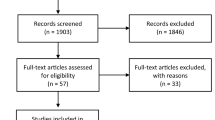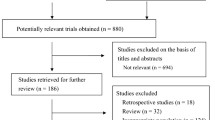Abstract
Pleurodesis is commonly indicated for symptom relief in patients with malignant pleural effusions. A number of factors may influence pleurodesis outcome, but whether tumor type is one of them is a matter of debate. This study investigates the impact of tumor type on the efficacy of bedside doxycycline and thoracoscopic talc poudrage pleurodesis in order to determine which patients may benefit most from these procedures. A retrospective study of 138 and 450 doxycycline and talc poudrage pleurodesis procedures, respectively, evaluated their overall successes and failures, according to primary tumor types. In addition, a logistic regression model addressed whether the pleurodesis outcome in different tumor types was influenced by or attributable to pleural tumor burden. In the talc group, patients with lung cancer and mesothelioma had significantly lower complete response rates (63 and 61%, respectively) as compared with breast (77%) and other metastatic effusions (74%, p = 0.012). In the doxycycline group, the data followed the same trend in that complete response rates were lower in patients with lung carcinomas (31%) than in those with breast cancer (54%) or metastases from other primary sites (74%, p = 0.001). The regression analysis showed pleural burden and tumor type as independent predictors of pleurodesis failure in the talc group. The tumor type involving the pleural surfaces influences the success of a pleurodesis, regardless of the sclerosing agent used. Malignant effusions due to mesothelioma and lung cancer are particularly prone to a failed procedure.

Similar content being viewed by others
References
Antony VB, Loddenkemper R, Astoul P, Boutin C, Goldstraw P, Hott J, Rodríguez-Panadero F, Sahn SA (2000) Management of malignant pleural effusions. Am J Respir Crit Care Med 162:1987–2001
Neragi-Miandoab S (2008) Surgical and other invasive approaches to recurrent pleural effusion with malignant etiology. Support Care Cancer 16:1323–1331
Light RW, Lee YCG (eds) (2008) Textbook of pleural diseases, 2nd edn. Hodder Arnold, London
Burrows CM, Mathews WC, Colt HG (2000) Predicting survival in patients with recurrent symptomatic malignant pleural effusions: an assessment of the prognostic values of physiologic, morphologic, and quality of life measures of extent of disease. Chest 117:73–78
Kolschmann S, Ballin A, Gillissen A (2005) Clinical efficacy and safety of thoracoscopic talc pleurodesis in malignant pleural effusions. Chest 128:1431–1435
Viallat JR, Rey F, Astoul P, Boutin C (1996) Thoracoscopic talc poudrage pleurodesis for malignant effusions. A review of 360 cases. Chest 110:1387–1393
Porcel JM, Salud A, Nabal M, Vives M, Esquerda A, Rodríguez-Panadero F (2006) Rapid pleurodesis with doxycycline through a small-bore catheter for the treatment of metastatic malignant effusions. Support Care Cancer 14:475–478
Porcel JM, Rodriguez-Panadero F (2009) Malignant effusions. In: Maskell N, Millar A (eds) Oxford desk reference respiratory medicine. Oxford University Press, Oxford, pp 342–345
Rodríguez-Panadero F, Antony VA (2002) Therapeutic local procedures: pleurodesis. Eur Respir Mon 7:311–326
Sánchez-Armengol A, Rodríguez-Panadero F (1993) Survival and talc pleurodesis in metastatic pleural carcinoma, revisited. Report of 125 cases. Chest 104:1482–1485
De Campos JR, Vargas FS, de Campos Werebe E, Cardoso P, Teixeira LR, Jatene FB, Light RW (2001) Thoracoscopy talc poudrage. A 15-years experience. Chest 119:801–806
Barbetakis N, Asteriou C, Papadopoulou F, Samanidis G, Paliouras D, Kleontas A, Lyriti K, Katsikas I, Tsilikas C (2010) Early and late morbidity and mortality and life expectancy following thoracoscopic talc insufflation for control of malignant pleural effusions: a review of 400 cases. J Cardiothorac Surg 5:27
Stefani A, Natali P, Casali C, Morandi U (2006) Talc poudrage versus talc slurry in the treatment of malignant pleural effusion. A prospective comparative study. Eur J Cardiothorac Surg 30:827–832
Aydogmus U, Ozdemir S, Cansever L, Sonmezoglu Y, Kocaturk CI, Bedirhan MA (2009) Bedside talc pleurodesis for malignant pleural effusion: factors affecting success. Ann Surg Oncol 16:745–750
Roberts ME, Neville E, Berrisford RG, Antunes G, Ali NJ (2010) Management of a malignant pleural effusion: British Thoracic Society pleural disease guideline 2010. Thorax 65(Suppl 2):ii32–ii40
Bielsa S, Salud A, Martínez M, Esquerda A, Martín A, Rodríguez-Panadero F, Porcel JM (2008) Prognostic significance of pleural fluid data in patients with malignant effusion. Eur J Intern Med 19:334–339
Disclosure
The authors declare that they have no conflicts of interest or financial ties to disclose.
Author information
Authors and Affiliations
Corresponding author
Rights and permissions
About this article
Cite this article
Bielsa, S., Hernández, P., Rodriguez-Panadero, F. et al. Tumor Type Influences the Effectiveness of Pleurodesis in Malignant Effusions. Lung 189, 151–155 (2011). https://doi.org/10.1007/s00408-011-9283-6
Received:
Accepted:
Published:
Issue Date:
DOI: https://doi.org/10.1007/s00408-011-9283-6




